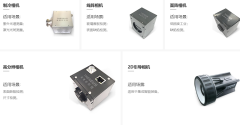1. Major breakthrough in 6-8 inch sapphire-based gallium nitride medium and high voltage power electronic device technology
The team of Guangzhou Third Generation Semiconductor Innovation Center of Xidian University has successfully overcome a series of difficult problems in the epitaxy, design, manufacturing and reliability of 6-8 inch sapphire-based GaN power electronic devices, and proposed a new low-warpage ultra -thin epitaxial heterostructure and Al2O3 / SiO2 composite dielectric passivation method, realizing the pilot product development of 1200V and 1700V high-performance GaN HEMT.
2. Wafer-level preparation of vertically injected AlGaN-based deep ultraviolet light-emitting devices
In order to solve the problem of low electro-optical conversion efficiency of deep ultraviolet LEDs, the Peking University team proposed a new technology route for preparing deep ultraviolet LEDs based on GaN/sapphire templates. By pre-setting cracks in the AlGaN layer with a high Al content, stress decoupling between the device structure layer and the GaN layer is achieved, and a deep ultraviolet LED wafer with no surface cracks is obtained. At the same time, the pre-set cracks can effectively buffer the local stress during the stripping process.
(III) Full-color display technology based on InGaN red light Micro-LED chips
Nanjing University, Xiamen University, Hefei University of Technology and King Abdullah University of Science and Technology in Saudi Arabia jointly tackled the gallium nitride-based high-indium red light material and its Micro-LED device technology, and used molecular beam epitaxy to prepare a tunnel junction red light Micro-LED device with high electrical injection efficiency.
4. High power density and high energy efficiency ratio deep ultraviolet Micro-LED display chips
Through long-term joint research, the Hong Kong University of Science and Technology, Southern University of Science and Technology, National Innovation Center for Third Generation Semiconductor Technology (Suzhou), Sitan Technology and other units have realized deep ultraviolet Micro-LED maskless lithography technology based on high power density, high pixel density, and low power consumption deep ultraviolet Micro-LED display chips.
They have built a maskless lithography prototype platform and prepared the first deep ultraviolet Micro-LED maskless exposure Micro-LED device, integrating the ultraviolet light source and mask plate pattern to provide sufficient radiation dose for photoresist exposure in a short time, creating a new path for industrial development. The relevant results were published in "Nature Photonics".
5. Atomic-scale visualization of local vibrations caused by defects in GaN
In order to solve the problem that defect-related local vibration modes in nitride semiconductors are difficult to analyze and characterize, a team from Peking University collaborated with Oak Ridge National Laboratory in the United States to use scanning transmission electron microscopy-electron energy loss spectroscopy technology , combined with high-angle annular dark field imaging and EELS spectrum and first-principles calculations, to accurately identify the atomic structure of stacking fault defects in gallium nitride and observe three related phonon vibration modes: local defect mode, confined body mode and fully extended mode. Communications.
6. Kilovolt-class gallium oxide vertical trench gate transistor
In order to solve the problem that gallium oxide lacks effective p-type doping, which makes it difficult to realize enhanced vertical structure transistors, the team of the University of Science and Technology of China optimized the post-annealing process to achieve nitrogen substitution activation and lattice damage repair, and developed a kilovolt-level gallium oxide vertical trench gate transistor, providing a new idea for realizing application-oriented high-performance gallium oxide transistors. This result was published at the 36th International Conference on Power Semiconductor Devices and Integrated Circuits and won the only best poster award at the conference.
7. 2-inch single crystal diamond heteroepitaxial self-supporting substrate is domestically produced
The research team of Xi'an Jiaotong University successfully realized the localization of 2-inch heteroepitaxial single crystal diamond self-supporting substrate by using microwave plasma chemical vapor deposition technology. The yield of heteroepitaxial single crystal diamond was improved by effectively controlling the uniformity of film formation, temperature field and flow field. The substrate surface has a step flow growth pattern, which can reduce the defect density of the substrate and improve the crystal quality. The half-peak widths of the XRD (004) and (311) rocking curves are less than 91 arc seconds and 111 arc seconds, respectively, laying the foundation for the semiconductor application of diamond.
(VIII) 8-inch silicon carbide materials and wafer manufacturing achieved industrial breakthroughs
Cost and effective production capacity are key issues that hinder the large-scale application of silicon carbide. The transformation and upgrading from 6 inches to 8 inches has become the general trend of industrial development. Many domestic material companies have achieved technological breakthroughs in the industrialization of 8 inches and formed supply capabilities. The domestic 8-inch silicon carbide wafer manufacturing line process technology has passed product tape-out verification, officially starting the 8-inch silicon carbide process.
(IX) Domestic automotive-grade silicon carbide MOSFET devices realize electric drive applications in new energy vehicles
Achieve technical breakthroughs in the entire chain of automotive-grade silicon carbide materials, device design, process processing and module packaging, with key indicators benchmarked against the typical technical level of foreign mass-produced products. The electric drive system using domestic silicon carbide MOSFET has has been verified by automobile companies and has been used in more than 1,000 units.
10. Key technologies for GaN-based blue lasers have achieved industrial breakthroughs
Key technologies for GaN-based blue lasers have achieved industrial breakthroughs: GaN single crystal substrates have formed an industry-university-research alliance represented by the Suzhou Institute of Nanotechnology, Chinese Academy of Sciences, Nanjing University, Suzhou Navi, Dongguan Zhonggall, and Shanghai Gallium Special. Their products have reached the international advanced level, and the localization rate has reached more than 50%; Suzhou Gallium Sharp, Hurricane Core Technology, Sanan Optoelectronics, etc. have all launched blue laser products, with an optical power of 5 watts under continuous operation at room temperature and a current of 3 amperes, a WPE efficiency of more than 41%, and an accelerated aging life of more than 20,000 hours under 60-degree conditions .









